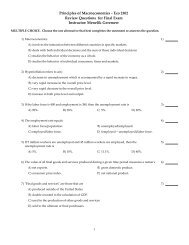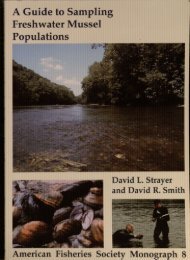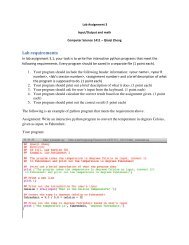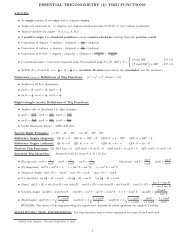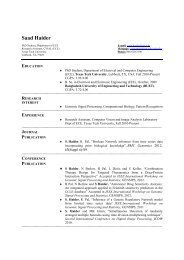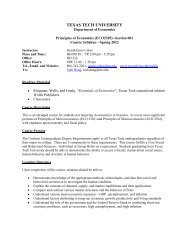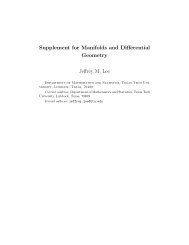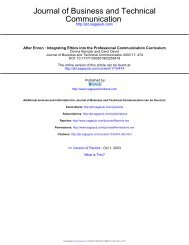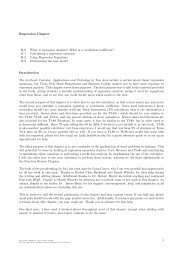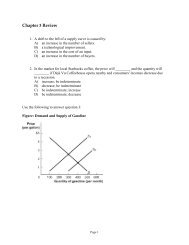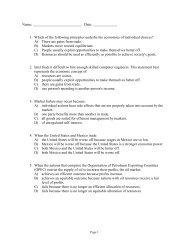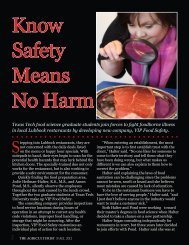Download - MyWeb - Texas Tech University
Download - MyWeb - Texas Tech University
Download - MyWeb - Texas Tech University
You also want an ePaper? Increase the reach of your titles
YUMPU automatically turns print PDFs into web optimized ePapers that Google loves.
The 2012 Season of the Chan Chich Archaeological Project<br />
diameter and from 25 to 30 cm in thickness.<br />
It is made of limestone and does not appear to<br />
have been carved. The altar was removed from<br />
the unit by using a log as a lever and the cobbles<br />
that were removed earlier as a fulcrum. At the<br />
end of the season the altar was moved back to<br />
its original location.<br />
Lot KU-1-B-3 was directly beneath the altar.<br />
This was excavated in hopes of locating a<br />
cache or offering beneath the altar, but nothing<br />
of this nature was found. This lot’s soil was a<br />
dark grayish-brown (10YR4/2) with cobbles<br />
scattered in it that were likely tumble from the<br />
slope of Structure 3. Not many artifacts were<br />
found other than ceramic sherds and a bifacial<br />
tool. A plaster floor may have once been present,<br />
but it was not identified during excavation. The<br />
lot was terminated when it became obvious that<br />
the excavations were in construction fill.<br />
Lot KU-1-B-4 was construction fill that<br />
consisted of white, powdery matrix and cobbles.<br />
It was 40 to 60 cm thick and terminated on an<br />
earlier floor surface (Lot KU-1-B-6). In Lot<br />
KU-1-B-4 a yellow, chalky rock was found,<br />
possibly ochre. The ceramic assemblage from<br />
this lot dated to the Middle to Late Preclassic<br />
(1000 B.C.–A.D. 250). An interesting ceramic<br />
sherd was found that resembles the Cunil type<br />
found mostly in the Belize Valley and dating<br />
to the Early Preclassic (Valdez and Houk, this<br />
volume:68, Figure 6.2).<br />
Lot KU-1-B-5 was a concentration of sherds<br />
embedded in the underlying plaster floor<br />
that appeared as though it was partially<br />
reconstructable. The type of ceramic could not<br />
be determined, but it was slipped with a reddishorange<br />
color. The vessel fragments embedded<br />
in the floor measured about 12-x-12-cm.<br />
Once Lot KU-1-B-5 was removed from the<br />
floor, the floor and associated contexts below it<br />
were designated Lot KU-1-B-6. We continued<br />
only to excavate the 1-x-2-m southern half of the<br />
subop until we came down on bedrock, which<br />
was 94–97 cm deeper than the top of the floor.<br />
Artifacts found in this context include ceramic<br />
sherds, unifacial tools, jute, and terrestrial land<br />
snail shells. This subop was terminated on<br />
bedrock about 2 m below the surface.<br />
Structure 2<br />
Structure 2 (Figure 5.7) at Kaxil Uinic is a<br />
range structure oriented east-west. It is a total<br />
of 52 m in length and at the widest point it is 18<br />
m. The building’s form is unusual. It is widest<br />
on the western end, and narrower towards the<br />
center section, and narrowest on the eastern<br />
end. The building faces south, based on the<br />
presence of steps ascending the structure, as<br />
well as a landing that appears to extend across<br />
most of the south face of the building. Structure<br />
2 is located in the southeastern area of Kaxil<br />
Uinic and was originally believed to be<br />
enclosing an eastern plaza; however, after the<br />
2012 field season it has been determined that<br />
this structure is associated with an unknown<br />
area to the south. Extremely thick vegetation,<br />
resulting in limited visibility restricted further<br />
examination for associated constructions.<br />
Workers from Chan Chich Lodge had cleared<br />
the structure of undergrowth and hurricane<br />
debris, leaving only larger trees, prior to our<br />
arrival, making it possible for us to excavate<br />
a large area on the south face of the mound.<br />
These two contiguous subops were opened to<br />
document the latest phase of construction on<br />
the structure and gain a better understanding of<br />
the architecture at Kaxil Uinic.<br />
Subop KU-1-G was a 1.5-x-4-m unit, and<br />
Subop KU-1-H was a 1.5-x-6-m unit. Both were<br />
oriented north-south perpendicular to Structure<br />
2’s long axis. Subop KU-1-G extended from<br />
the base of the mound to approximately half<br />
way up the structure, where it joined Subop<br />
KU-1-H, which continued to the summit of the<br />
mound. Together, the two units encountered<br />
56



